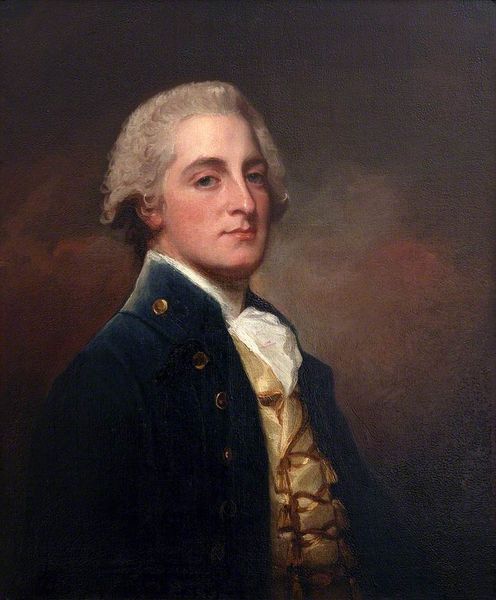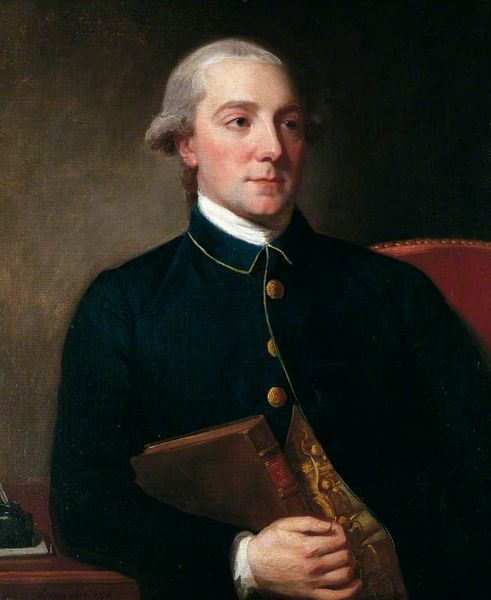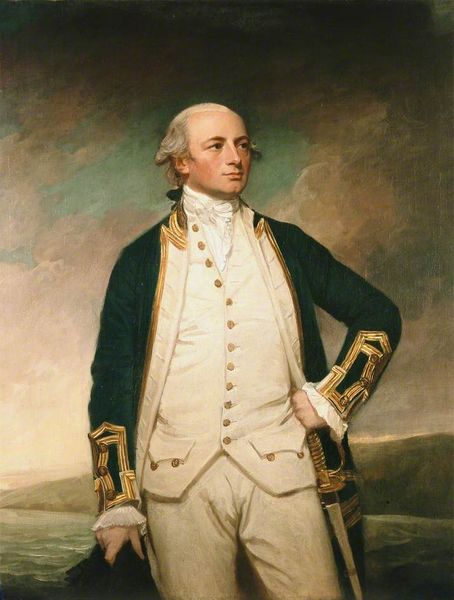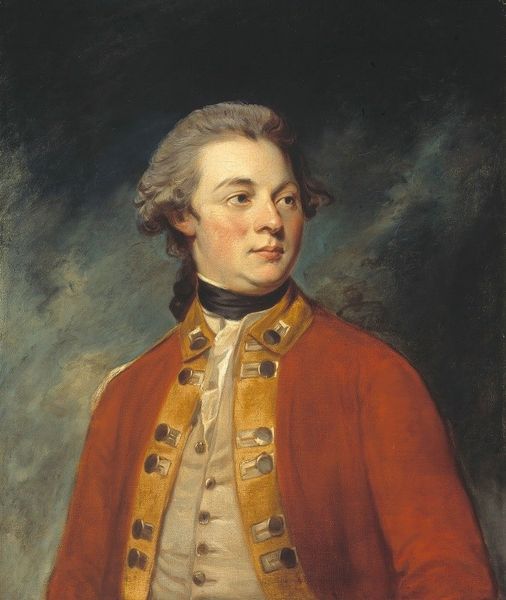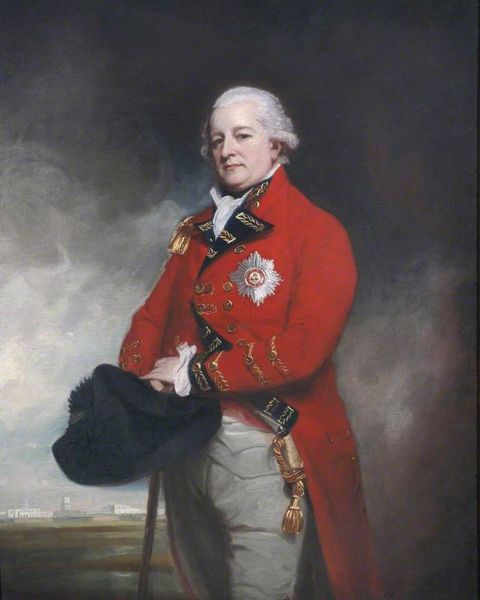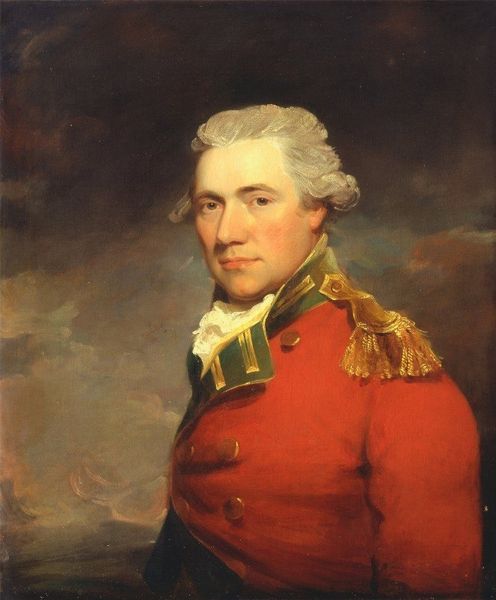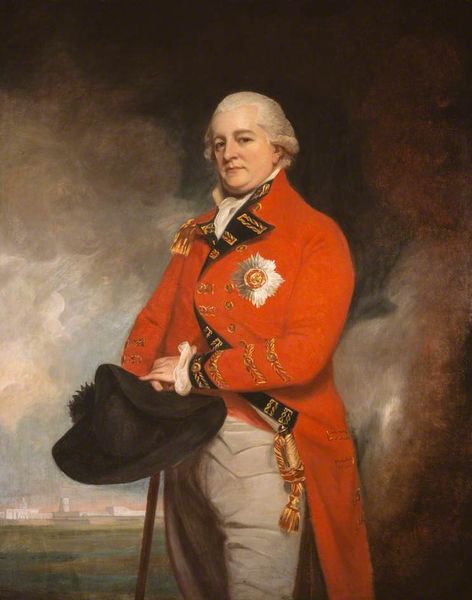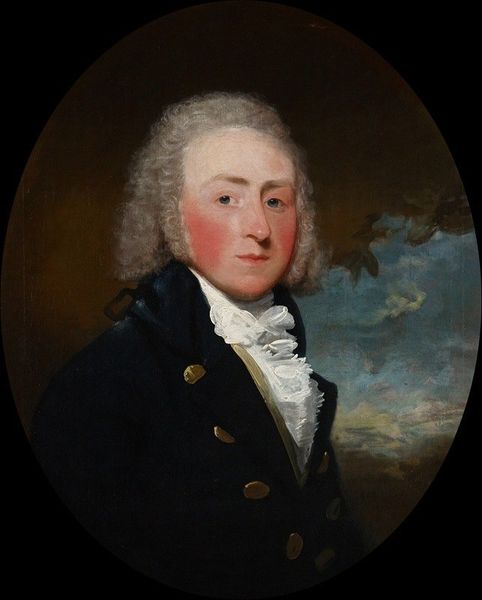
painting, oil-paint
#
portrait
#
portrait
#
painting
#
oil-paint
#
figuration
#
classicism
#
romanticism
#
history-painting
#
academic-art
Copyright: Public domain
Curator: Before us, we have George Romney's oil painting, depicting Captain Arthur Forbes of Culloden. Editor: It’s quite striking! The muted tones and direct gaze create a real sense of… restraint, perhaps? Or duty? The overall composition seems intentionally minimal, drawing all attention to the subject. Curator: Precisely. Romney masterfully uses light and shadow to sculpt Forbes's face, creating a sense of depth. Consider the subtle transition of tones—the warm highlights on his cheekbones juxtaposed with the cooler shadows that define his jawline. Notice, too, the crispness of the white wig and collar set against the darker uniform, achieving an almost architectural quality through contrasts. Editor: Yes, and the uniform itself is key. It situates Forbes within a particular historical context of military service and empire, but the painting isn’t just about surface-level representation, is it? Culloden links the subject to some serious social history… considering the Jacobite rising. We also have a clear marker of social and political dominance here. Curator: Exactly. The portrait adheres to established conventions of aristocratic portraiture – the three-quarter pose, the subtle suggestion of power conveyed through posture – while employing romantic aesthetic ideals such as the softened edges and tenebrism that help highlight the subject's inherent individualism. The careful staging creates a subtle play of class identity and status. Editor: And in that tension between the individual and the collective, we get at something interesting. While Forbes is clearly positioned within a framework of power, Romney also manages to suggest a degree of human vulnerability. It forces us to remember individuals within the vast theater of historical events. Curator: An incisive point. The overall composition and subdued palette underscore a certain sobriety fitting for a man occupying a position of authority and leadership within that socio-political order. It transcends mere portraiture, doesn't it? Editor: It certainly does. Examining it now has clarified both the inherent technical skill in Romney's design and the nuanced sociopolitical dimensions at work in portraits of this kind. Curator: Agreed, a fruitful discussion that casts new light on an established form.
Comments
No comments
Be the first to comment and join the conversation on the ultimate creative platform.
